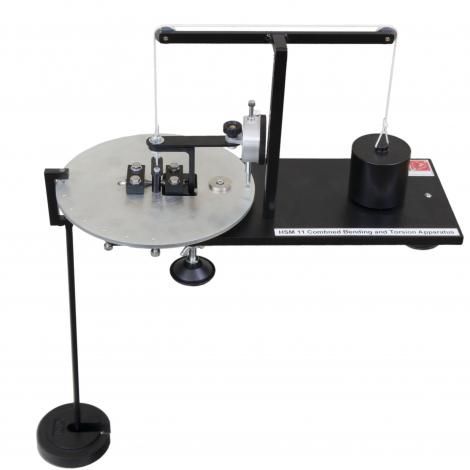The object of this experiment is to determine what levels of combined bending and torsion cause elastic failure in different materials, and to compare them with various theories of failure.
The HSM11 uses specially machined ‘necked’ specimens made from round bar. The specimen is clamped at one end to the base plate and at the other end to a counterbalanced circular loading plate. The loading plate is suspended using a cord and counterbalance to ensure the specimen is not loaded prior to experimental loading.
The loading plate is graduated in 15° intervals and at each interval has an indent to allow a special hanger to locate. The special hanger suspends from the indents in the loading plate and hangs over the test bench. The special hanger enables pure bending, pure torque or combined loads to be applied depending on its position.
The specimen deflection is measured by a dial gauge mounted diametrically opposite the load point. In the event of a specimen failure safety is ensured by set screws attached to the underside of the base plate.
A set of test specimens in mild steel, aluminium alloy and brass is supplied, with optional test specimens also available separately. A set of test rods of the same specimen material is also supplied so that specimens of differing neck geometry can be produced.


